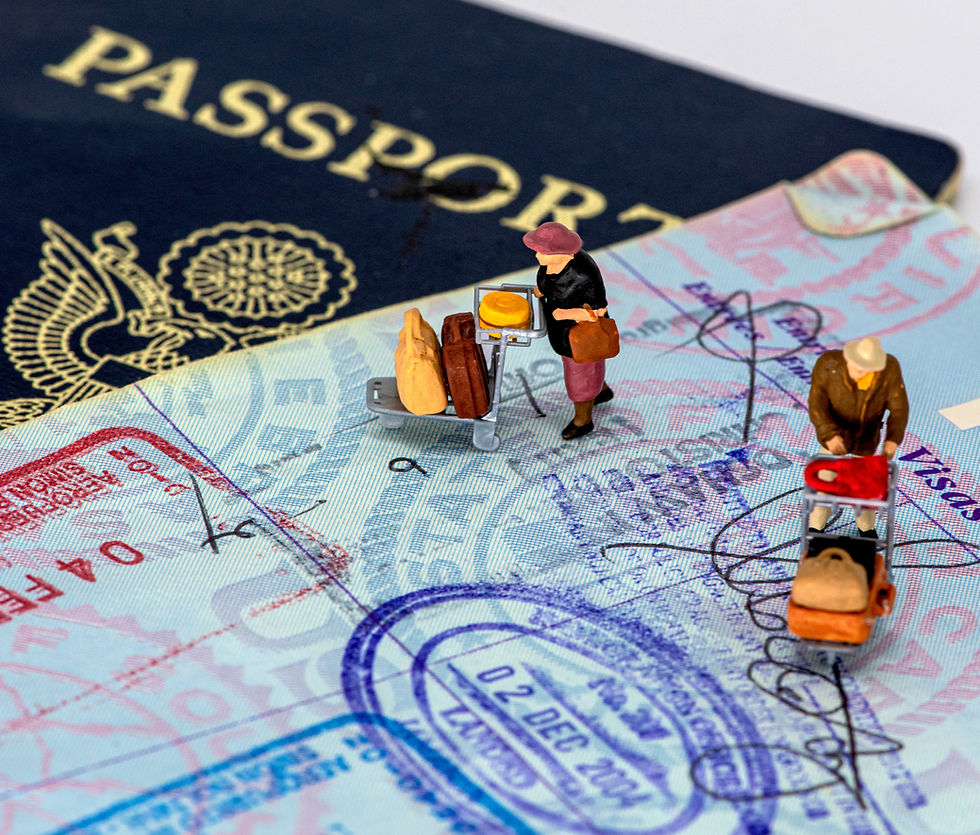Filming in the Brazilian Amazon: Challenges, Realities, and Rewards
- Douglas B. Silva
- Feb 24
- 4 min read
Updated: Feb 25
The Amazon is undoubtedly one of the most incredible places in the world—not only for its beauty but for everything it represents in terms of nature’s sheer power. It stands as a profound symbol of how life thrives in perfect harmony and balance, sustaining the planet.
For filmmakers and audiovisual producers, shooting in this region is an unforgettable and great experience. However, before reaching that point, it’s a journey that requires meticulous planning, resilience, and logistical coordination that challenges even the most experienced professionals.

Entry Points and Essential Tips for Filming in the Brazilian Amazon
To reach the Amazon, international travelers usually fly into Brazil through major hubs like São Paulo or Rio de Janeiro, then catch domestic flights to Manaus or Belém—the two primary gateways to the rainforest. Before your trip, make sure your travel documents are ready: check if your nationality requires a visa, ensure your passport is valid for at least six months, and note that foreign productions filming in Brazil must complete the ANCINE registration.
Health precautions are also crucial. While no vaccines are mandatory for Brazil, the yellow fever vaccine is strongly recommended for the Amazon, along with vaccines for hepatitis A and B, typhoid, and tetanus. Don’t forget insect repellent and antimalarial medication, as mosquitoes are a constant presence in the rainforest.
Manaus and Belém: Gateways to the Amazon
When planning to film in the Brazilian Amazon, choosing the right gateway is essential for your project's goals. Manaus may be your first choice. Known as the 'Heart of the Amazon,' this metropolis is surrounded by dense rainforest and is famous for the Meeting of the Waters, where the dark Rio Negro and the sandy-colored Solimões River flow side by side without mixing for several kilometers. This stunning natural phenomenon is a must-see and serves as an ideal starting point for exploring the region.
Belém, on the other hand, is known as the "City of Mango Trees" and is the cultural and culinary capital of the Amazon. The Ver-o-Peso Market is a sensory overload, with its vibrant stalls selling exotic fruits, fresh fish, and traditional herbs. Both cities offer unique experiences and serve as logistical hubs for expeditions into the rainforest.
While Manaus and Belém are the most common entry points, other cities like Rio Branco and Boa Vista also have major airports and may serve as gateways, depending on the specifics of your project.

Navigating the Amazon’s Challenges for Filming
The Amazon has limited infrastructure, making rivers the primary means of transportation, especially for reaching distant cities or remote areas. People, equipment, and supplies rely on boats, with trips that can take several days. During the dry season, when water levels in the rivers drop, access can be cut off for weeks or even months. These river journeys are an adventure in themselves.
Loading and unloading boats with all the necessary equipment is the first challenge of the trip and will require reliable assistants to carry your gear. Crew members must be prepared to sleep in hammocks—while a bed on the boat might be reserved, they are limited, and the most common arrangement is sleeping in hammocks on the deck. Throughout the journey, the constant hum of the boat’s engine accompanies you as it navigates the winding waterways.
Technical Challenges to film in the Amazon: Heat, Humidity, and Equipment
Filming in the Amazon can be a test of both human, and technical endurance. The intense heat, often exceeding 35°C (95°F), combined with humidity levels of up to 90%, creates a harsh environment for cameras, recorders, microphones, and other equipment. Condensation inside lenses, microphones, and camera bodies is a common issue. The excessive heat can cause cameras to overheat and stop functioning, so it’s wise to use equipment designed for extreme conditions or keep backup cameras on hand. Microphones are equally vulnerable; internal moisture can render them unusable, making it crucial to have spares available.
Batteries are another concern, as high temperatures can reduce their lifespan. Bringing extra batteries and portable chargers is a must. Additionally, the constant humidity can lead to mold growth on lenses, so daily cleaning with specialized products is necessary to keep equipment in working order.
Unpredictable Weather: Rain, Heat, and “Cold”
The weather in the Amazon is as extreme as it is unpredictable. Rain can occur at any time of the year, often in sudden, torrential downpours that can bring filming to a halt for hours. While the dry season, from June to November, tends to offer more stable conditions, the weather can still change rapidly. It’s crucial to store your equipment in a safe, secure location, as unexpected torrential rainstorms can cause floods and damage gear if left unprotected.
Interestingly, the forest itself generates microclimates. Beneath the dense canopy, temperatures can drop noticeably, especially at night. This stark contrast between the sweltering heat of the day and the cooler forest floor adds another layer of complexity in the region.
The Amazonian Diet: Exploring Local Flavors
Unless you plan to bring your own food for the entire trip, you’ll need to adapt to a diet shaped by the Amazon’s ecosystem and Brazilian culinary traditions. The region’s cuisine is as diverse as its environment, featuring ingredients and dishes that might be new to visitors but are worth discovering.
The Amazon is home to unique fruits like açaí, cupuaçu, and camu-camu, which are not only flavorful but also refreshing in the humid climate.
Fish is a key part of the local diet, with species like tambaqui, tucunaré, and the giant pirarucu being especially popular. Pirarucu, one of the world’s largest freshwater fish, is often grilled or used in stews. Another standout dish is tacacá, a soup made with tucupi (a broth from wild manioc), jambu (a leafy herb with a numbing effect), and dried shrimp.
The Reward: Capturing the Amazon’s Magic
Despite the challenges, filming in the Amazon is an unparalleled experience. If you’re lucky, you might even spot the elusive pink river dolphin, or boto, a freshwater species unique to the Amazon, or spend time with indigenous communities who have lived in harmony with the forest for thousands of years. These encounters have the power to change your perception of life, offering profound lessons about coexistence, resilience, and the interconnectedness of all living things.
If you'd like to learn more about filming in Brazil, including tips and requirements, visit our website page Filming in Brazil for a comprehensive introductory guide.





















Comments